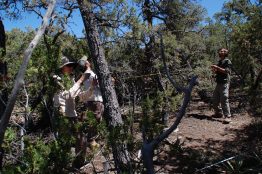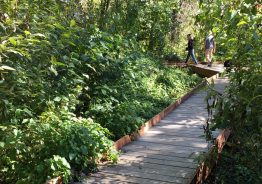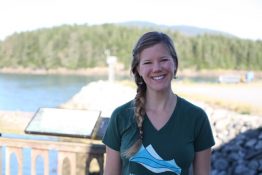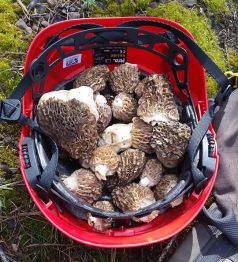Major forest die-offs due to drought, heat and beetle infestations or deforestation could have consequences far beyond the local landscape. Wiping out an entire forest can have significant effects on global climate patterns and alter vegetation on the other side of the world, according to a study led by the University of Washington and published Nov. 16 in PLOS ONE. “When trees die in one place, it can be good or bad for plants elsewhere, because it causes changes in one place that can ricochet to shift climate in another place,” said lead author Elizabeth Garcia, a UW postdoctoral researcher in atmospheric sciences.
Read more at UW Today »Mislabeled seafood may be more sustainable, new study finds
With seafood, what you see isn’t always what you get. It’s no secret that mislabeling is rampant around the world. Recent studies estimate up to 30 percent of seafood served in restaurants and sold in supermarkets is actually something other than what is listed on the menu or label. Why mislabeling happens is a little squishier. Fraud, human error or marketing ploys — combined with an often multicountry traverse from boat to restaurant — make it possible you are eating a different fish than what’s on the menu.
Read more at UW Today »Completed boardwalk trail in Yesler Swamp offers access to wildlife, natural areas
Yesler Swamp, part of the Union Bay Natural Area along Lake Washington that is managed by UW Botanic Gardens, has a newly completed, fully accessible boardwalk trail that loops throughout the wetland, offering opportunities for birdwatching, exercise and a chance to experience nature in the heart of the city. Restoration work on the 6-acre swamp began more than 15 years ago as part of a UW capstone course taught by Kern Ewing, a professor in environmental and forest sciences.
Read more at UW Today »A summer of science communication in Alaska's Prince William Sound
In a plane flying over Alaska’s stunning Prince William Sound, the pilot and crew keep their eyes peeled for schooling groups of herring. The fish are easy to spot from above as they congregate here and there along the shoreline. Each cluster behaves in its own unique way, allowing scientists to tell one group from another. Amy Brodbeck, a graduate student in the UW College of the Environment’s School of Marine and Environmental Affairs, is among those searching for the fishy cohorts.
Read more »Morel mushrooms pop up, cluster together after wildfires
Avid mushroom hunters will tell you that fire is essential for finding morels. These fungi, distinguishable for their dark, honeycomblike caps, pop out of the ground by the bushel in spring after a large wildfire. This ecological knowledge is mostly anecdotal, shared among morel enthusiasts for recreational hunts and commercial harvesting, in what is now a multimillion-dollar, worldwide industry. Yet few scientific studies have actually quantified morels’ abundance after a fire.
Read more at UW Today »





